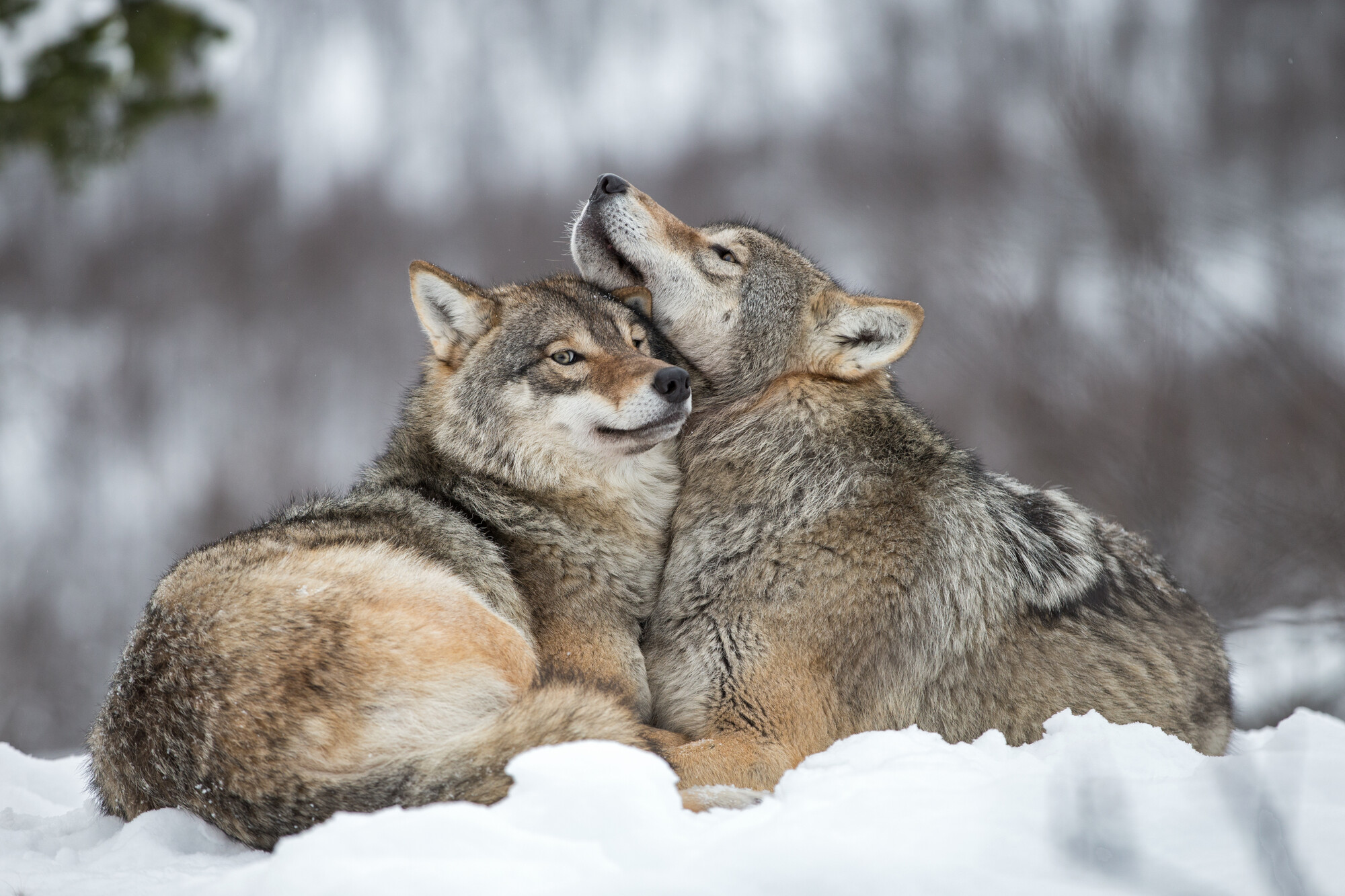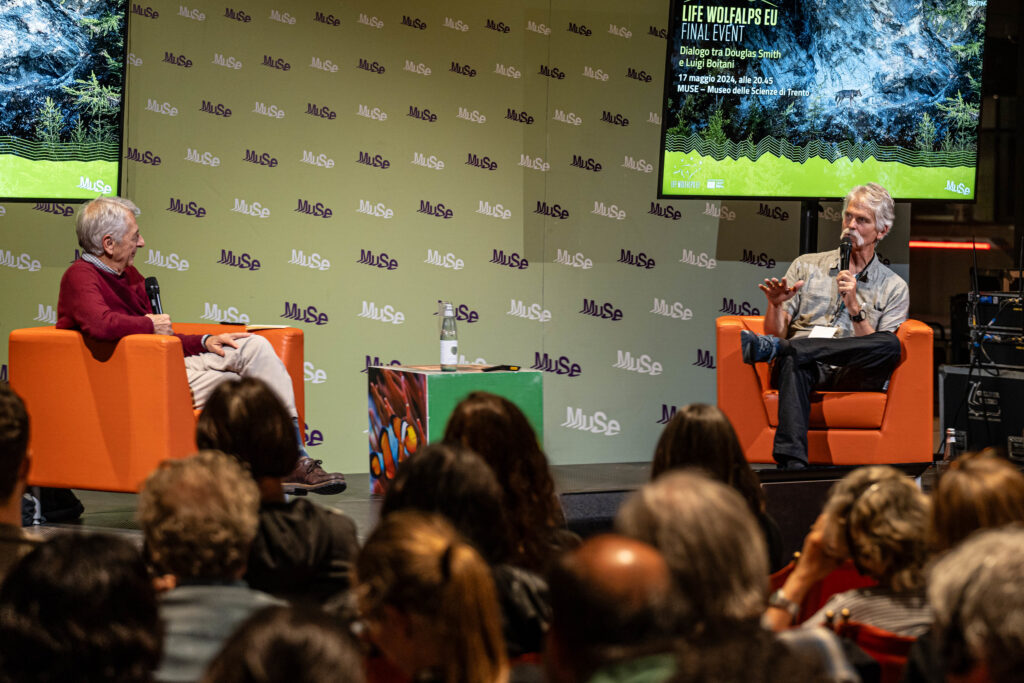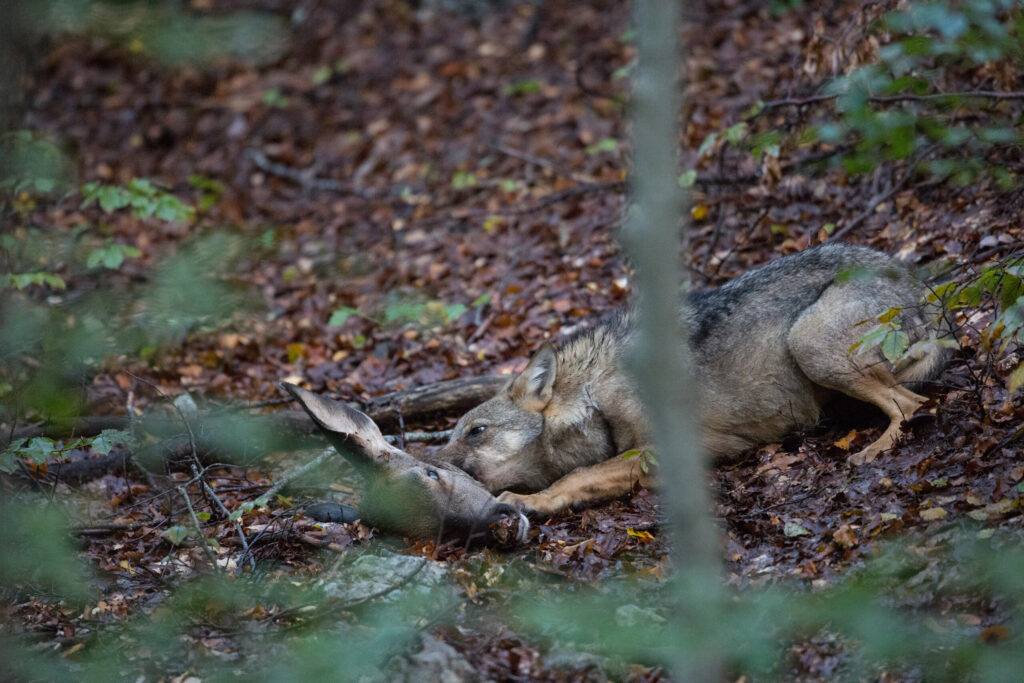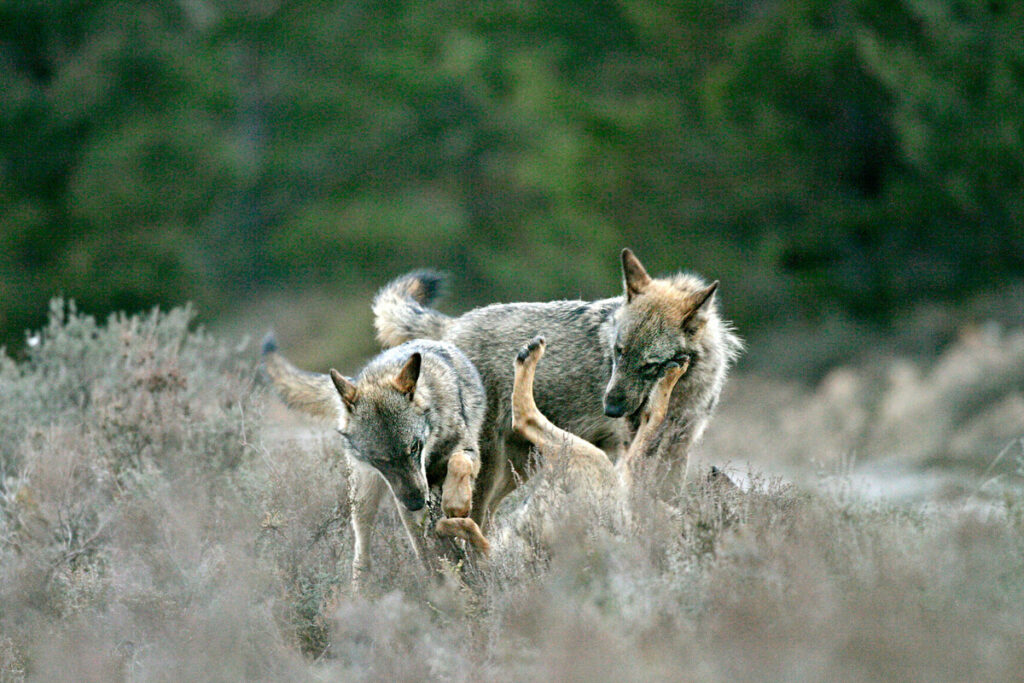At the final conference of the LIFE WolfAlps EU project, the coexistence of man and wolf was in the spotlight. Rewilding Apennines could not miss this crucial event. Among the many stimulating speeches, we were particularly struck by the dialogue between two giants of wolf conservation: Douglas W. Smith and Luigi Boitani.

On Friday, May 17th, at the Muse – Science Museum in Trento, an extraordinary meeting took place as part of the final conference of the Life WolfAlps EU project. Two of the most authoritative figures in wolf conservation, Douglas W. Smith and Luigi Boitani, came together to share experiences, emotions, and reflections on an animal that represents much more than just a predator species. It was not a formal meeting based on data and scientific information, but an informal dialogue in which the two scientists shared their personal views on the wolf.

Douglas Smith, the man behind the reintroduction of wolves in Yellowstone National Park, opened the meeting with a narrative that touched deep chords. He recounted his experiences, offering a portrait that was at times bleak but realistic of the American attitude towards nature. With the strength of his four decades of fieldwork experience, he calmly and wisely navigated through turbulent waters, exploring not only the ecological complexities but also the social, philosophical, and spiritual implications of wolf conservation.
He spoke about the centrality of individual freedoms in American culture and how these can be an obstacle to dialogue among different stakeholders. He struck a nerve when he showed a photograph of people masked like the old Ku Klux Klan, displaying the carcass of a wolf, revealing how even in the USA, the figure of the wolf often reflects and reveal broader and more complex social issues.
Over time, Smith explained, his ecological motivations for nature protection increasingly gave way to ethical and spiritual considerations. One particular episode illuminated this transformation: his encounter with a tribe of Native Americans from the Yellowstone area who came to pray for the wolf during the reintroduction. For them, the return of the wolf had nothing to do with a healthy ecosystem or the ethics of conservation. It was purely a matter of spirituality.
This reflection paved the way for a provocative question: is it really necessary to attribute a role to the wolf in the ecosystem to justify its protection? Luigi Boitani, the father of wolf conservation in Italy, pressed Smith on this point, emphasizing the complexity of predator-prey dynamics. Both expressed skepticism about the notion that wolves always serve as regulators of prey, especially because high wolf densities, necessary for this balance, are hardly acceptable to humans.
Smith described Yellowstone as a perfect laboratory, where a unique dynamic between six predators and eight prey species offered ecologists an unparalleled opportunity. He emphasized the importance of long-term studies to fully understand these complex systems and spoke about the approach used: starting from the analysis of individual released wolves to build a picture of the emerging population. This approach is opposite to what is generally used in the study of animal populations, where researchers typically start from the population as a whole.

Boitani then suggested that a book should be written about the personalities of wolves, as there is no single “wolf,” as we are accustomed to thinking, but many wolves, each with their own attitudes, abilities, and personalities. Smith agreed, emphasizing that the wolf, often seen as a strong and resilient species, actually has an incredibly fragile social system. While the species can survive hunting and poaching, each killed wolf represents a loss of a unique individuality, of a personal story that cannot be replaced.
This meeting at the Muse Museum offered a fascinating and touching perspective on wolf conservation, going beyond mere ecological issues to explore the depths of human connections with nature. It was a moment of reflection that reminds us of how complex and wonderful our relationship with the wild world is and how important it is to protect not only species but also the stories and emotions they embody.
Watch the full recording of the dialogue
